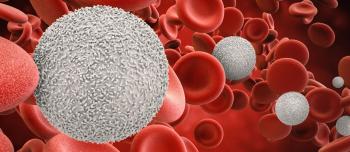In July, investigators from The Children’s Hospital of Philadelphia (CHOP) published a review of their research into the molecular processes that ensure factors V (FV) and VIII (FVIII) become “activated” to carry out their role as coagulation proteins. These and other proteins function in the “clotting cascade,” an intricate series of chemical and molecular reactions between clotting factors that lead to clot formation.
The review article was co-authored by Mettine Bos, PhD, and Rodney Camire, PhD, both of the Department of Pediatrics, Division of Hematology at CHOP. Bos’s research was funded in part through the National Hemophilia Foundation’s Judith Graham Pool Postdoctoral Research Fellowship.
Most clotting factors, including factors V and VIII, remain inactive until they are activated by proteolysis. During proteolysis, enzymes break down a protein partially, into peptides, or completely, into amino acids. In their inactive state, these clotting factor proteins are called “profactors.” Once activated, they are converted into “cofactors” to perform their various functions in the clotting cascade. In their research, Bos and Camire analyzed the molecular mechanisms of profactor activation.
The authors explain that although factors V and FVIII are similar in structure and function, the molecular source of activation for each protein is very different. They found that the B domain location on the amino acid sequence of the FV molecule plays a fundamental role in the protein’s activation. The B domain keeps FV in the profactor state. The conversion occurs when the enzyme thrombin removes the B domain by cleaving, or cutting, its bonds. Once the B domain is “deleted,” its inhibitory effect is lifted, and FV is converted to a cofactor.
Conversely, the investigators found that the FVIII B domain plays no part in cofactor activation. Instead, cleavage between domains A1 and A2 is the source of the FVIII conversion. However, the mechanism is not yet established.
“Collectively, these studies lay the groundwork for further uncovering the precise molecular mechanism by which FV and FVIII transition from the profactor to cofactor state,” concluded the authors.
The review article, “Blood Coagulation Factors V and VIII: Molecular Mechanisms of Procofactor Activation,” was published in the July 2010 issue of the Journal of Coagulation Disorders.





